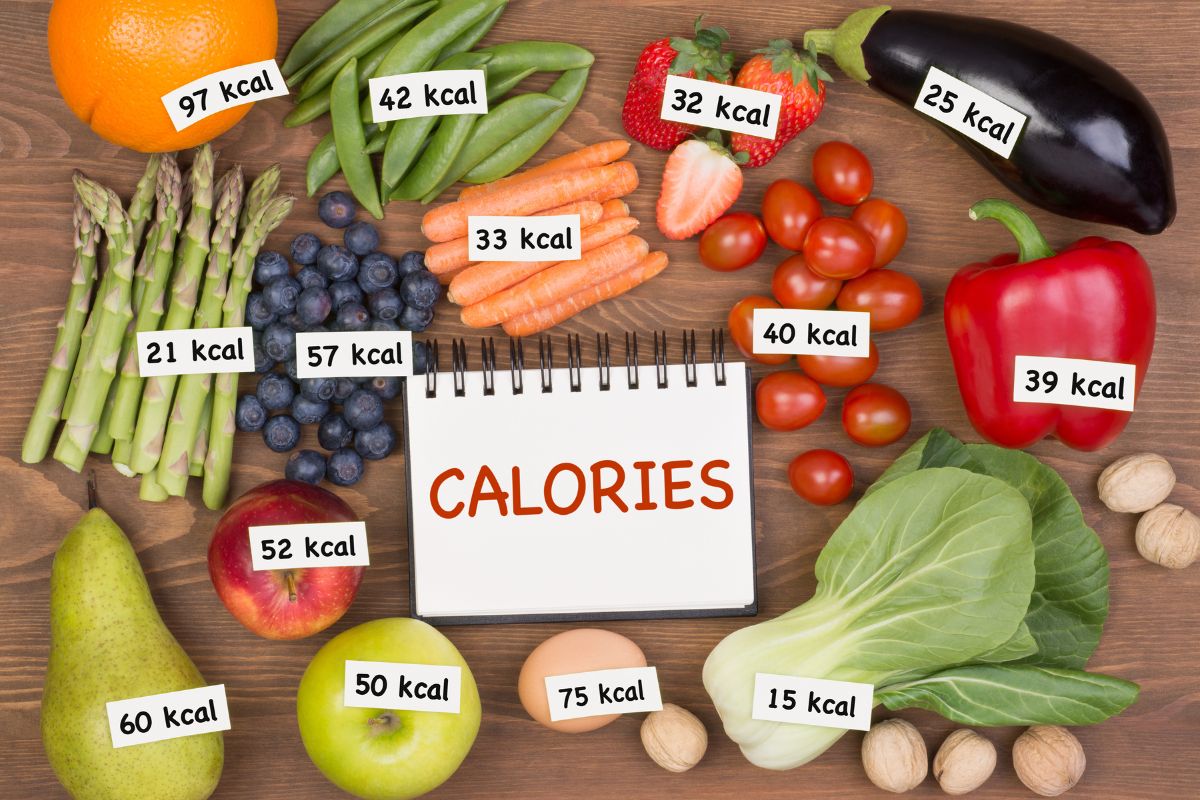Calories Counting Tips for Fitness Enthusiasts

Tracking your calorie intake gives you clarity about your diet and helps align your eating with your goals. Whether you want to lose fat, build muscle, or fuel better workouts, logging calories can guide your nutrition. In fact, research shows that people who log their food tend to lose more weight and keep it off in the long run. By paying attention to portions and staying mindful of intake, you take control of your energy balance rather than guessing.
How Calorie Counting Supports Your Goals
-
Weight Loss: By keeping calories in a deficit (eating fewer calories than you burn), you lose body fat. Calorie counting ensures you maintain a consistent deficit. Studies have found that people who diligently log calories see greater weight loss over time. In practice, this means monitoring every meal so you don’t unintentionally slip out of your deficit.
-
Muscle Gain: To build muscle, a slight calorie surplus is often needed to provide extra energy for growth. Tracking your intake makes it easier to target a small surplus without overeating. One review notes that an energy surplus provides an “anabolic stimulus” for muscle growth. Combined with high protein and strength training, counting calories helps ensure you’re fueling gains and not just fat.
-
Performance Optimization: Athletes and active people need enough fuel for training, recovery, and daily function. Proper sports nutrition—including hitting your calorie and nutrient targets—is “a key component for optimizing training and performance.” In other words, logging calories helps ensure you’re eating enough (but not too much) to support hard workouts. When you know exactly how much you eat, you can adjust fueling on tough training days to maximize energy and recovery.
Practical Tips for Accurate Tracking
-
Measure Portions: Avoid eyeballing. Use a kitchen scale or measuring cups for precision. Weighing your food is the most accurate way to know exactly how much you’re eating. Even using measuring cups or visual comparisons (e.g. a baseball-sized fist of rice) can help keep portions realistic.
-
Log Consistently: Use a reliable tracking tool or app to record every bite as you eat. Many apps (MyFitnessPal, Lose It!, Cronometer, etc.) have huge food databases and barcode scanners to speed up entry. Make logging a habit—for example, log your lunch before you leave the table—so nothing is forgotten.
-
Read Nutrition Labels: Nutrition labels are your friend. Check the serving size on packaged foods and enter that exact portion into your tracker. Remember that “one package” may contain multiple servings. This ensures you record the correct calories.
-
Be Mindful of Calorie-Dense Foods: Pay special attention to foods high in fat or sugar (like oils, cheese, desserts, fried foods, etc.). A small mismeasure of these can cause big errors. As one expert notes, under-recording even a spoonful of oil or a scoop of ice cream can create a large gap between logged and actual calories. If in doubt, use the scale for oil or sauces.
-
Plan & Prepare: Meal prep and pre-logging help. Planning your meals in advance makes it easier to enter them into an app or journal, reducing last-minute guesswork. When meals are pre-weighed or pre-logged, you’ll be much less likely to forget an ingredient or snack.
-
Include Everything: Log all foods and drinks. This means sauces, condiments, cooking oils, coffee add-ins, alcoholic beverages, and snacks between meals. Even small extras add up. For example, omitting oils or dressings can undercount a meal by 100+ calories. Similarly, don’t skip beverages (juice, soda, alcohol)—most people underreport what they drink. Treat every calorie source as part of your total.
Common Mistakes to Avoid
-
Underestimating Portions: A very common error is eyeballing and underlogging portion sizes. If you pour a cereal bowl or dine out without measuring, you’re likely eating more calories than you think. Use a scale or measuring tools whenever possible to avoid this pitfall.
-
Skipping Snacks and “Extras”: It’s easy to leave out the little things: a few crackers here, a couple of chips there, or “just a taste” of someone else’s food. Those bites can be 50–100 calories each. Likewise, sauces, dips, and salad oils are calorie-dense and often forgotten. One nutritionist warns that forgetting oils, spreads, and sauces can leave you off by 100+ calories per meal. Make it a rule to record everything, no matter how small.
-
Ignoring Liquid Calories: Drinks can hide a lot of energy. Don’t assume a low-fat latte or smoothie is negligible—always log the actual beverage and extras (milk, sugar, etc.). Nutrition labels themselves can be off by up to ~20%, so when possible weigh or calculate recipes. A common mistake is to skip drinks or remember them later; instead, count them like any other food.
-
Inconsistent Tracking: Logging only on “easy” days or skipping weekends skews results. Try to track every single day to see true trends. Tracking retrospectively (writing down meals at night) often means forgetting items. Aim to log before or right after eating so you capture everything.
Recommended Tools and Apps
-
MyFitnessPal: A very popular, free app with a huge food database. It calculates a daily calorie goal and lets you log foods and exercise. (Healthline names MyFitnessPal “best overall” for calorie tracking.) The free version is handy for basic logging; the premium version adds features like custom macronutrient goals and detailed reports.
-
Lose It!: Another user-friendly app. The free version lets you scan barcodes and log calories, with a simpler interface. (Healthline highlights Lose It! for its strong free features.) It’s a good choice if you want straightforward logging without too many bells and whistles.
-
Cronometer: Designed for precision, Cronometer tracks calories and micronutrients. It’s popular among people following specific diets (keto, paleo, high-protein, etc.). Healthline notes it’s “best for specific diets.” You can manually enter foods or scan barcodes, and it shows vitamins, minerals, and more—ideal for nutrition geeks who want detail.
-
Other Resources: In addition to apps, consider a digital food scale and nutrition journals. Even a simple notebook works if it helps you stay consistent. The key is using a tool that you’ll actually use every day. Many find that smartphone apps make tracking easier and more motivating.
Adjusting Calorie Targets Over Time
-
Tune In to Progress: Revisit your calorie goals every 2–4 weeks based on results. Are you losing weight or gaining muscle as intended? If progress stalls, it may be time to recall your needs. For weight loss, remember that a plateau often means calories in = calories out. In other words, if your weight isn’t budging, you may no longer be in a deficit. You can fix this by slightly reducing calories further or increasing activity to break the plateau. For muscle gain, if you aren’t adding strength or mass, you might need to increase calories or protein a bit.
-
Follow and Adjust: Nutrition experts recommend tracking diet and training for a couple of weeks, then fine-tuning your intake based on what happens. For example, calculate your maintenance calories (there are formulas or app estimates), then monitor your weight/strength for two weeks. If you’re not moving toward your goal (losing or gaining at the expected rate), adjust your daily target up or down. This cycle of track–check–adjust keeps you on the right path.
-
Fuel by Training Load: When your training intensity or volume changes (more workouts, heavier lifts, longer cardio sessions), your energy needs change too. On heavier training days or phases, allow a bit more food—especially carbs—to support performance and recovery. Conversely, on lighter days you can dial back slightly. Over time, matching calories to your training load helps you stay energized without overshooting your goals.
-
Stay Flexible and Patient: Your metabolism and activity will adapt as you lose weight or gain muscle, so expect to adjust your plan. A fitness tracker might say you burned extra calories, but don’t always add those back automatically—focus on the bigger picture of your weekly intake. Keep in mind that plateaus and fluctuations are normal. Use them as signals to fine-tune your approach rather than getting discouraged.
Bottom Line
Counting calories is a powerful tool when done carefully. By measuring portions, logging everything, and using smart apps or journals, you can align your eating with your fitness goals. Avoid common pitfalls like skipping snacks or misjudging servings, and be ready to adjust as you progress. With consistency and attention to detail, calorie tracking can keep you motivated and informed on your journey to better fitness.






